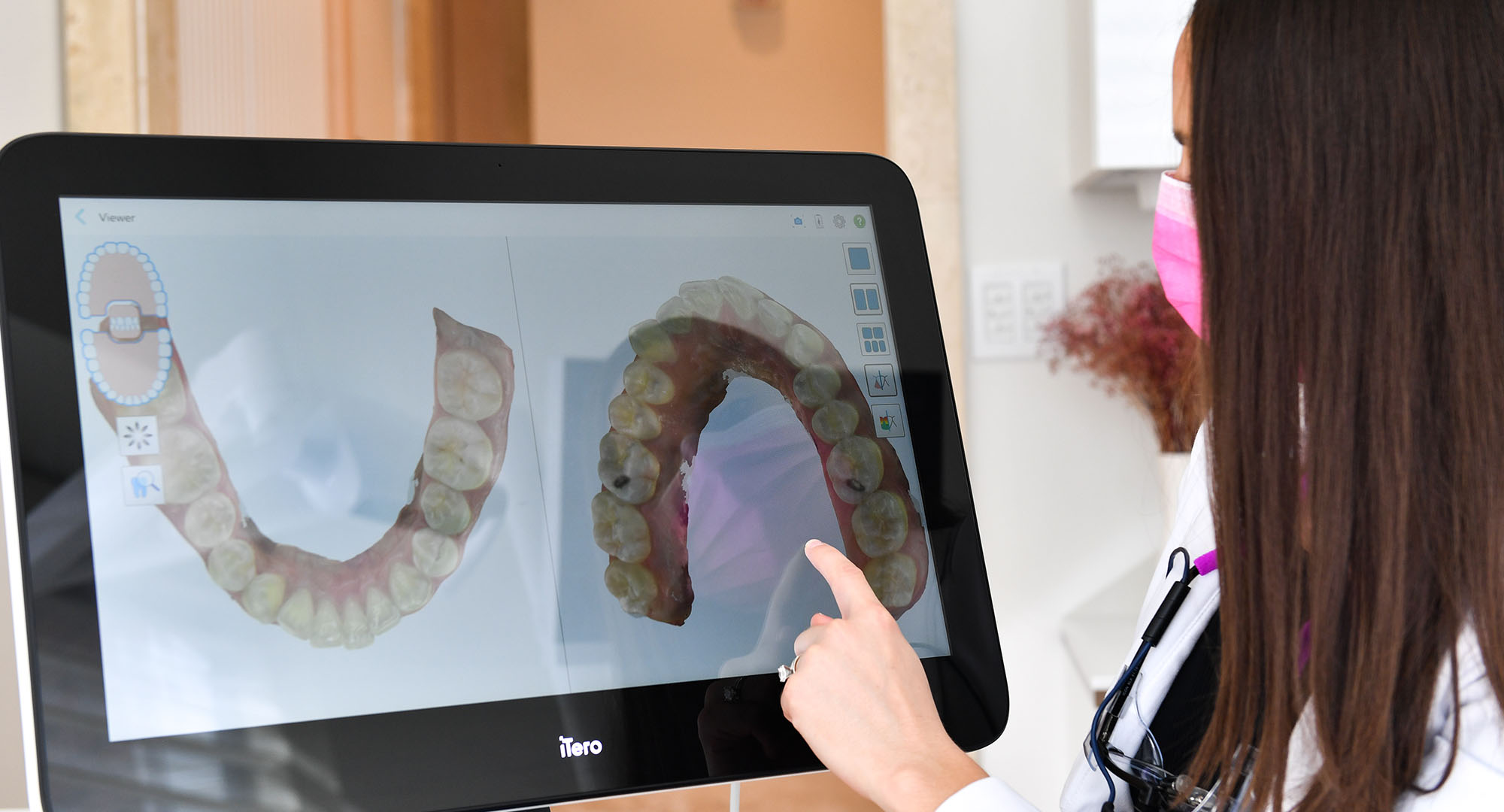The Power of Imagery in Creating Exceptional Patient Experiences

Dentists have a marketing problem: people understand that oral care is valuable to their health and well-being, but they are often afraid to visit dental offices. Drills, picks, knives, and scary-looking machines can lead to fear and anxiety, so practitioners need to be proactive about transforming their offices into more calming environments.
Major patient care advances have been made in medicine, and dentistry needs to keep pace. But this isn’t a simple technological arms race to see who can have the most advanced dental office. Practitioners need to make strategic investments in technology that positively affect patients’ experience.
To find out what technologies make my practice stand out, I conducted an informal survey of my patients. The results might surprise you.
My CBCT machine was a popular answer among my patients. As opposed to old-school x-rays, the CBCT machine’s instantaneous 3-D images provide a wow factor for my patients. I’ve been especially impressed recently with the quality of Dentsply Sirona’s units, which produce highly detailed images at a low dose.
I use the Orthophos SL 3-D imaging unit that creates 3-D images, 3-D photos (although some patients find this weird), digital 2-D panoramic images, and cephalometric images. My staff discusses the machine’s ultra low-dose protocol with patients, so they understand that we are limiting the amount of radiation as much as possible. This is particularly helpful for parents of pediatric patients.
I like to use the CBCT scanner because it provides us with high-quality images, so we can make accurate diagnoses and map out treatment plans to help remedy issues quickly. The Dentsply Sirona machine offers a variety of diagnostic options for implantology, endodontics, periodontics, orthodontics, maxillofacial surgery, TMJ, and other clinical needs.
My practice is a multispecialty office. We do a lot of cosmetic dentistry and dental implants, so we frequently take impressions of our patients’ teeth. This is why I wasn’t surprised that our 3Shape Trios intraoral scanner was well-liked among our patients. Like the CBCT, the intraoral scanner is simple and offers patients the immediate gratification of an HD image that shows all the nooks and crannies of their smiles. What I did find interesting, however, was that older patients had a much stronger love of the technology than younger people did.
When I asked why, these patients said they remembered having impressions taken the traditional way. They are thankful that we spare them from uncomfortable trays full of impression materials that do not taste good, and they appreciate that we are able to capture more accurate impressions and create higher quality restorations more quickly.
It’s important not to think of dental technologies in silos. Every tool in your office contributes to the practice’s overall patient experience.
The Smile Design Studio is a proprietary workflow designed to enable my staff to collaborate with patients to design perfect smiles. It is composed of the following technologies: the CBCT scanner, the intraoral scanner, a professional-quality HD camera (I use a Nikon D810), and 3Shape digital design software. We complete the dedicated photo and video studio with Profoto off-camera flashes so I can shape the light predictably for the best possible results.
During the initial consultation, the dentist assesses the patient’s teeth and provides feedback on how the patient’s smile could be improved. We capture images and videos and upload them to the software, which is used to create a realistic mock-up of the patient’s teeth. This gives the patient a clear preview of how his or her smile will look once the work is complete. The ability to show – rather than tell – patients their expected results is especially important when discussing cosmetic dentistry procedures such as veneers, orthodontics, and implants.
Patients really love the smile design process because they feel like they are in control. A major source of patients’ dental fears stem from the loss of control they experience once they sit in the chair. Our Smile Design Studio makes going to the dentist a collaborative process with equal parts give and take to make everyone feel at ease. The practitioner is able to walk patients through the treatment plan and answer any questions they may have. This workflow has proven successful because it empowers patients with knowledge of what is to come so they can set their expectations accordingly.
After reflecting on my informal survey’s results, it would be easy to conclude that patients love images – that they like cool, Jetson-like technology for the sake of it. But to make that conclusion would be to miss a larger truth. It is said that images are worth a thousand words, and I think that’s particularly true in dentistry. CBCT images or digital impressions provide patients with information in an unfamiliar, often intimidating environment. They set the stage for a practitioner’s diagnosis and facilitate communication between the dentist and patient. This type of collaboration builds trust and loyalty, the cornerstones to any successful practice.
Maged el-Malecki, DMD, received his degree from Boston University in 2002 and currently practices in both Boston and Dubai. He is a general dentist with a strong focus on patient education in every procedure. Dr. Malecki is also an active member of the Academy of General Dentistry, the Dental Organization for Conscious Sedation, and the American Academy of Cosmetic Dentistry.
